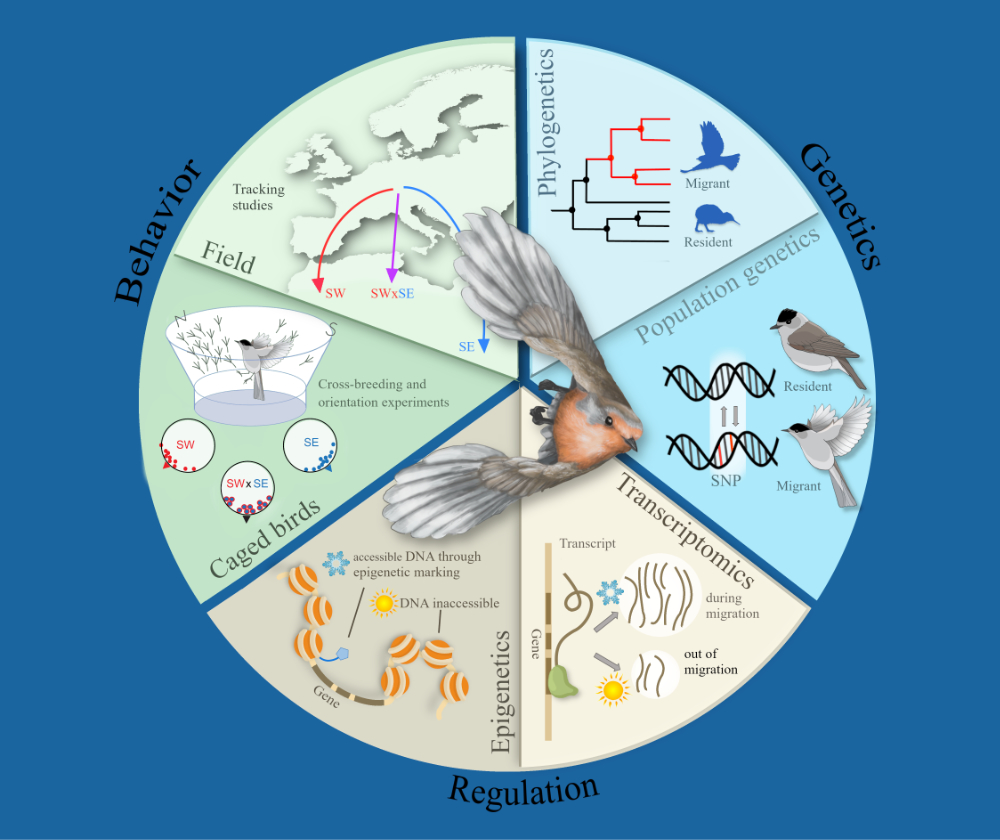Speaker
Description
Understanding and predicting micro-evolutionary dynamics of seasonal migration in the face of rapid environmental changes requires quantifying the relative magnitudes of genetic and environmental effects underlying facultative expression of migration, and of migratory plasticity. Foundational work in migration genetics invoked the quantitative genetic paradigm, envisaging that overall genetic variation stems from numerous small-effect variants, to dissect phenotypic variation in migration in birds, fish and insects. This approach has potential to estimate key effects, and also to generate important conceptual insights into emerging phenotypic variation. Yet, despite recent revolutions in quantitative genetics methodologies, there has still been remarkably little effort to estimate key quantitative genetic effects on migration, or predict resulting system dynamics, in wild populations in nature. I summarise recent quantitative genetic dissections of expression of seasonal migration versus residence in partially migratory European shags (Gulosus aristotelis). State of the art ‘animal models’ fitted to year-round ring-resighting data revealed non-zero additive genetic variance in liability to migrate in adults and juveniles. Such variances were small relative to the magnitudes of permanent and temporary environmental variances. However, substantial gene-by-environment interactions emerged at the phenotypic level, implying that environmental variation can expose otherwise cryptic genetic variation to selection. Yet, peak expression of additive genetic variance was partially temporally decoupled from episodes of strong selection, limiting micro-evolutionary responses. This work illustrates how quantitative genetics approaches can now be employed to generate major new insights into the micro-evolutionary dynamics of migration in the wild.

